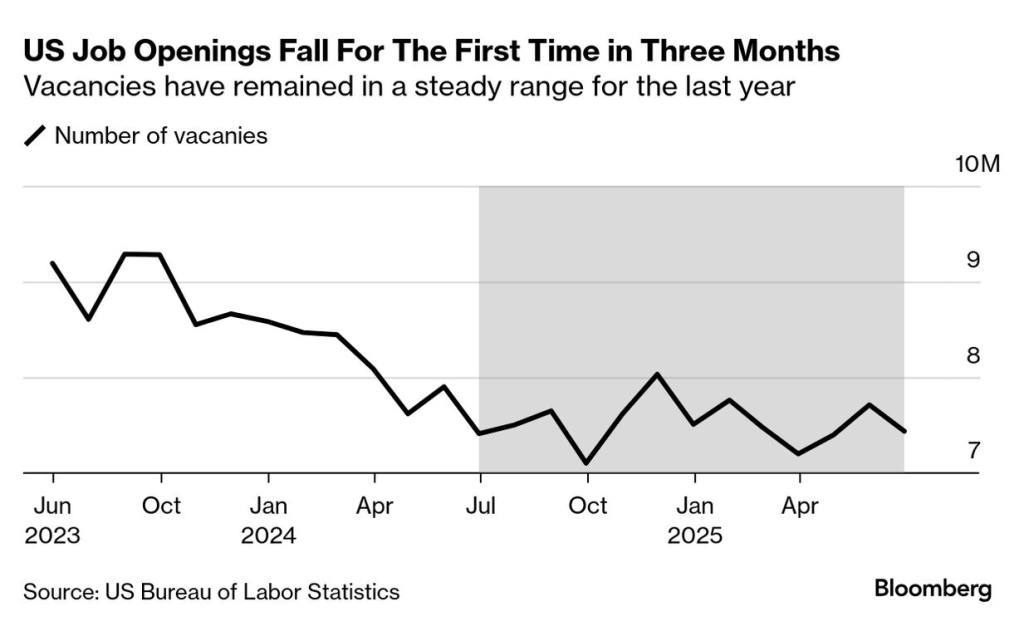- The Federal Reserve will conclude its policy meeting later in the day.
- Data on Tuesday revealed a decline in US job vacancies.
- Gold dropped to its lowest level on Monday after the US signed a trade deal with the European Union.
Gold prices held steady on Wednesday as market participants looked forward to the FOMC policy meeting. At the same time, a weaker dollar after poor employment figures lent support. However, gold has lost some of its safe-haven appeal due to recent trade deals, which have eased global trade war concerns.
The Federal Reserve will conclude its policy meeting later in the day. Market participants expect no change in interest rates. Therefore, all focus will be on the tone of policymakers during the meeting. Recent economic data has shown unexpected resilience in the US economy. At the same time, inflation came in hotter than expected in June. As a result, rate cut expectations declined.
However, there is less uncertainty about tariffs as the US works to sign trade agreements with most of its partners. Initially, policymakers were concerned that tariffs would slow growth. At the same time, the levies have boosted price pressures. However, with more trade deals, the uncertainty surrounding tariffs and the future is fading. This has led some experts to believe the Fed might ditch its cautious tone.
“There could be a chance that the Fed may start to tilt towards the dovish side of the pendulum, and that is being portrayed on the Treasury yields,” OANDA senior market analyst Kelvin Wong said, adding that dollar strength has also eased for now.

US job openings (Source: US Bureau of Labor Statistics)
Meanwhile, gold got support on Tuesday after data revealed a decline in US job vacancies. According to the report, job openings came in at 7.44 million, missing the forecast of 7.51 million. Fewer vacancies point to a decline in demand for labor. As a result, the dollar fell, making gold cheaper for foreigners.
However, gold dropped to its lowest level on Monday after the US signed a trade deal with the European Union. The agreement eased worries about a likely trade war between the two countries. Consequently, it boosted risk appetite and hurt safe haven assets like gold. Meanwhile, China and the US agreed to extend their talks beyond August 1, as they work toward a trade deal.
Elsewhere, the nonfarm payrolls report due on Friday will shape the outlook for Fed rate cuts. This will likely cause volatility in the gold market.



